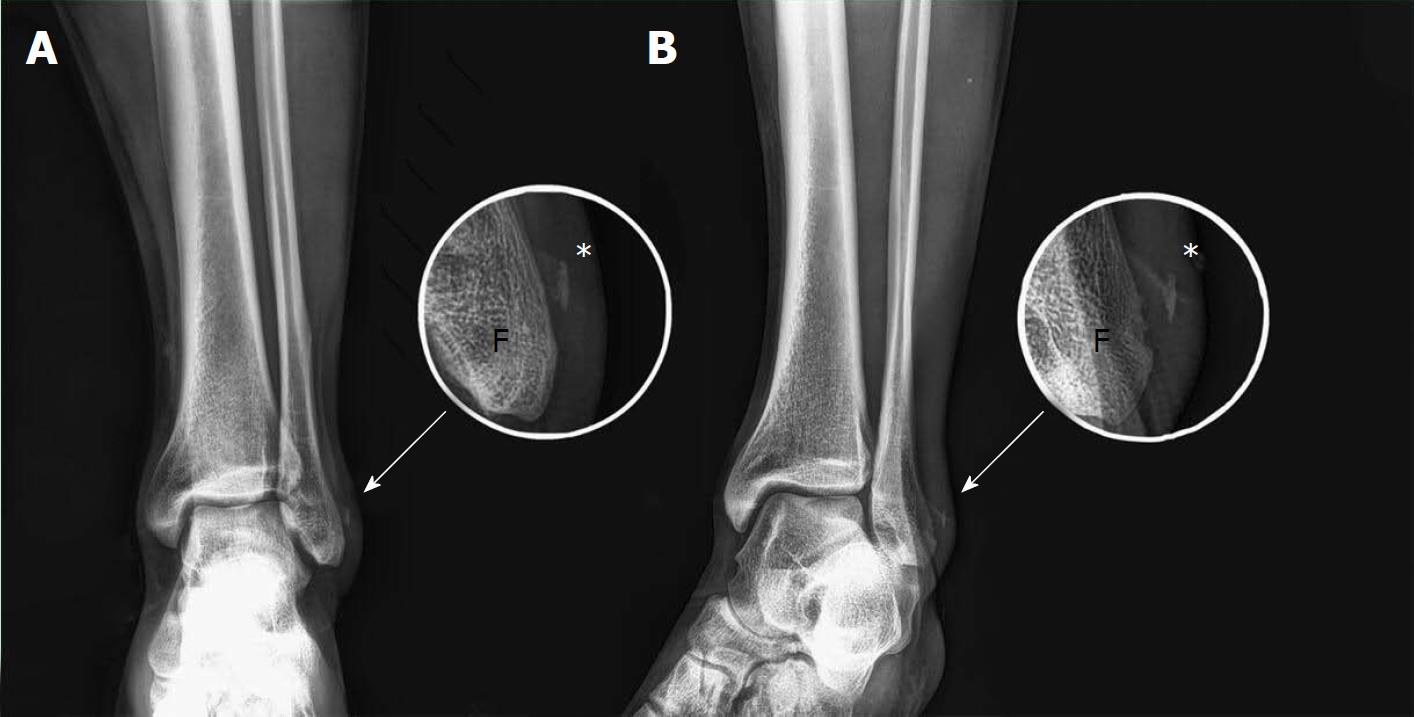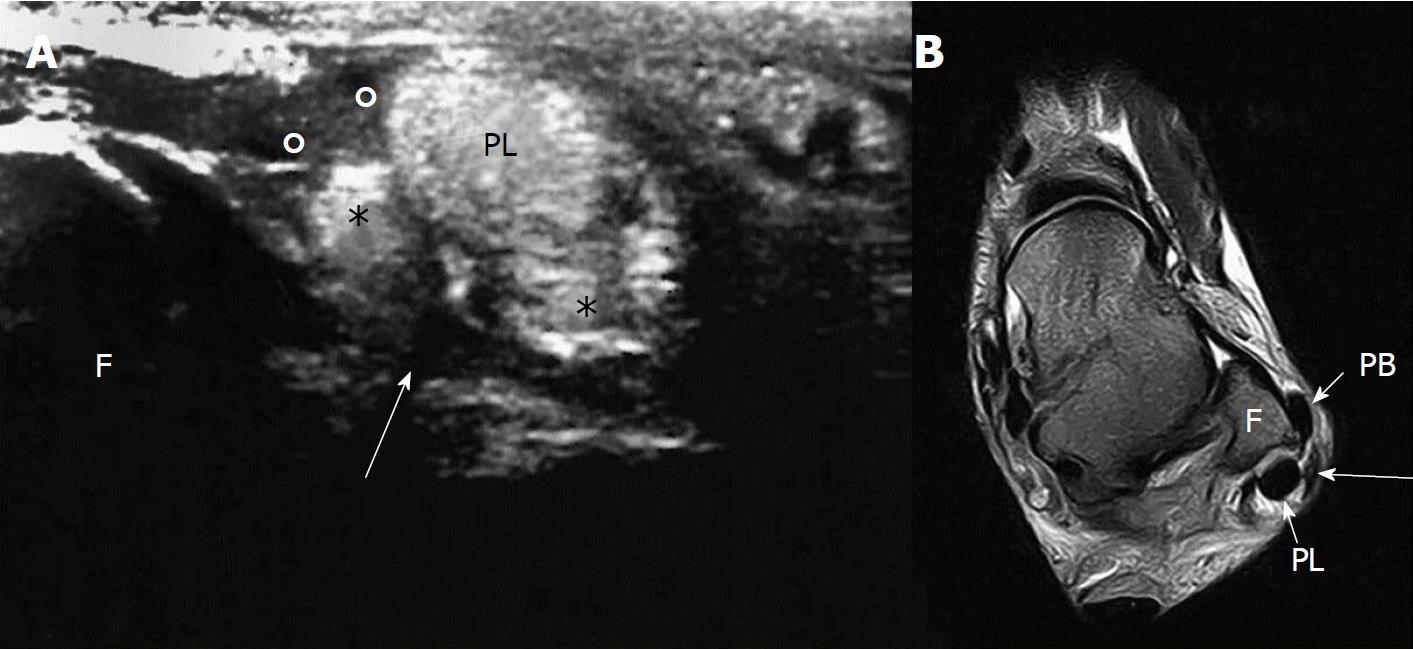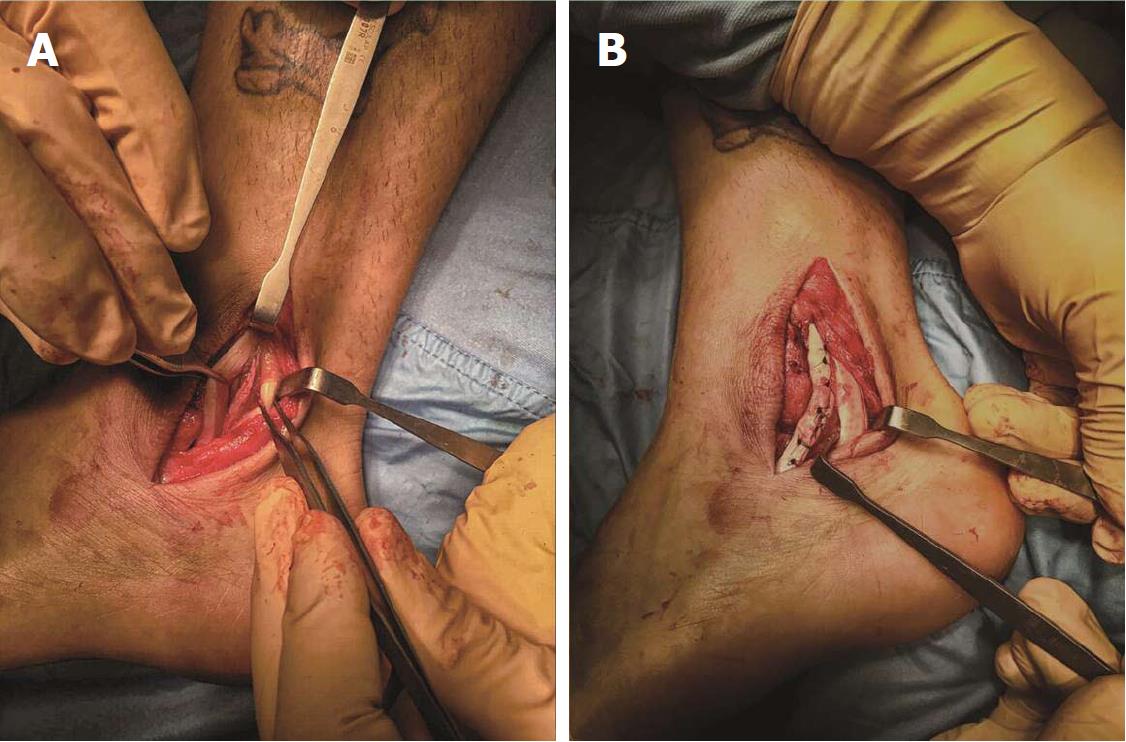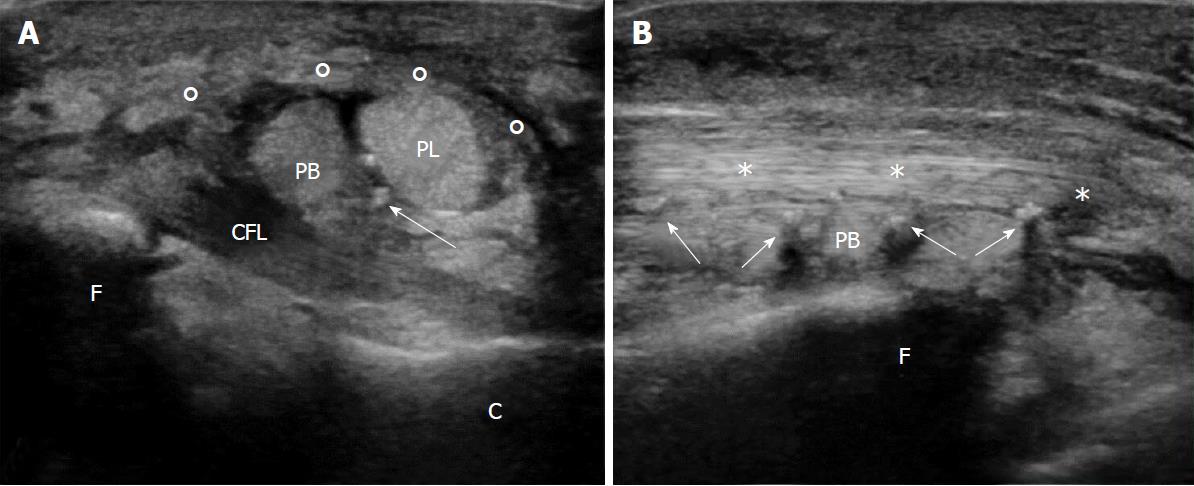Copyright
©The Author(s) 2018.
World J Radiol. May 28, 2018; 10(5): 46-51
Published online May 28, 2018. doi: 10.4329/wjr.v10.i5.46
Published online May 28, 2018. doi: 10.4329/wjr.v10.i5.46
Figure 1 X-ray: AP and oblique view, no fractures of the peroneal malleolus are shown.
On the magnification a detachment of a small bony foil (periosteum) is appreciable (*). A: AP; B: Oblique view. F: Fibula.
Figure 2 Ultrasound and magnetic resonance imaging evaluation of the injured ankle.
A: US examination of the injured ankle: Avulsed retinaculum (°); two hemi-tendons due to split lesion of peroneus brevis (*); CFL (arrow). B: MRI T2w axial sequence: MRI shows PB anterior subluxation. The avulsion of the retinaculum (arrow) can be observed. US: Ultrasound; MRI: Magnetic resonance imaging; PB: Peroneus brevis; PL: Peroneus longus.
Figure 3 The surgical procedure.
A: Surgical view: The peroneus longus (PL) resides more posteriorly, while is well visible the peroneus brevis (PB) is torn in two hemi-tendons the anterior part is about the 70% of the total peroneus brevis tendon; B: At the end of operation the two PB hemi-tendons are sutured together; posteriorly PL can be appreciated.
Figure 4 Post-surgical ultrasound examination of the injured ankle.
A: Axial US scan: the restored retinaculum (o) covers the two peroneus tendon, peroneus longus (PL) superiorly, and peroneus brevis (PB) inferiorly. Note the inhomogeneity of the lower part of the PB due to surgery. Suture stitches can be seen as hyperechoic spots (white arrows); fibula (F); calcaneus (C); calcaneofibular ligament (CFL); B: Longitudinal US scan. US: Ultrasound.
- Citation: Fischetti A, Zawaideh JP, Orlandi D, Belfiore S, SIlvestri E. Traumatic peroneal split lesion with retinaculum avulsion: Diagnosis and post-operative multymodality imaging. World J Radiol 2018; 10(5): 46-51
- URL: https://www.wjgnet.com/1949-8470/full/v10/i5/46.htm
- DOI: https://dx.doi.org/10.4329/wjr.v10.i5.46
















